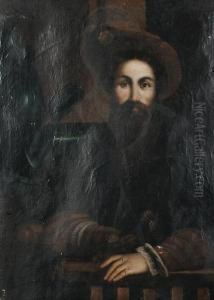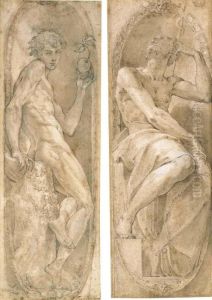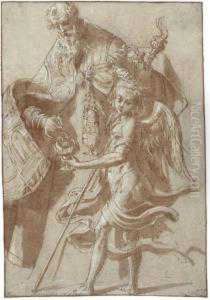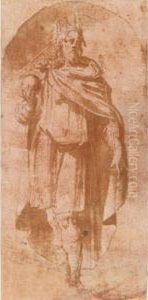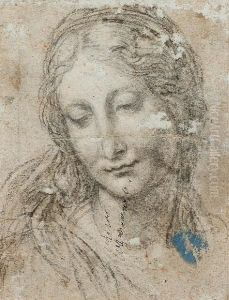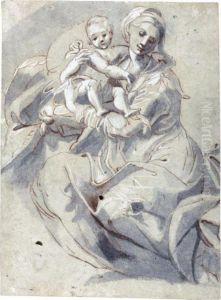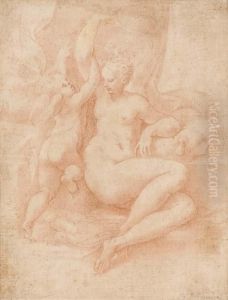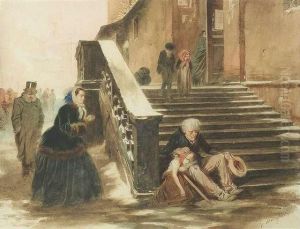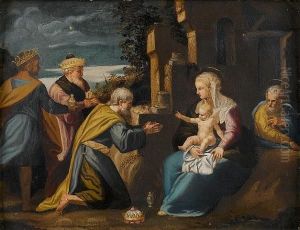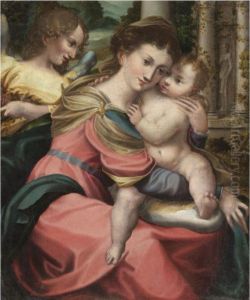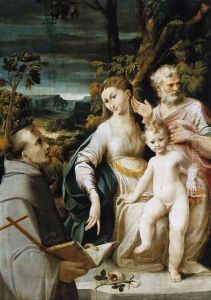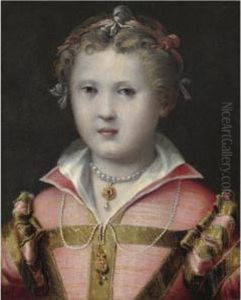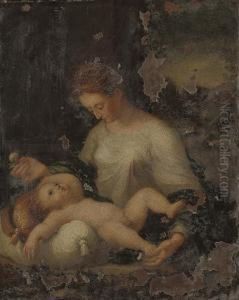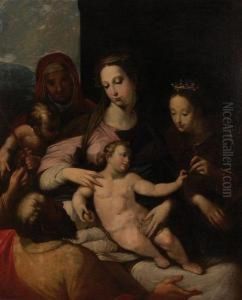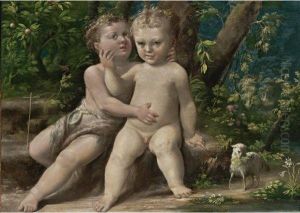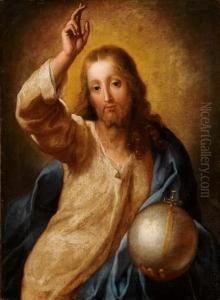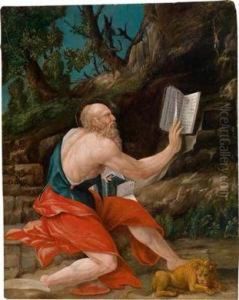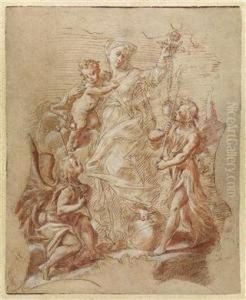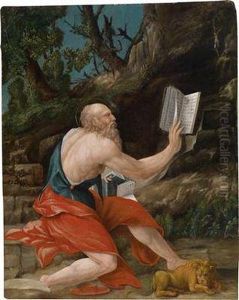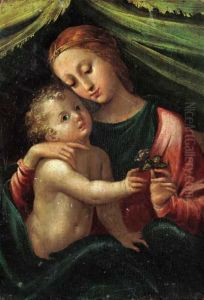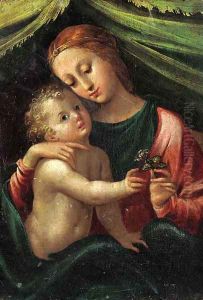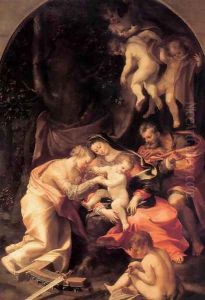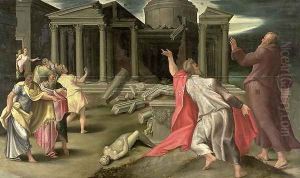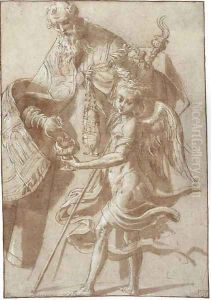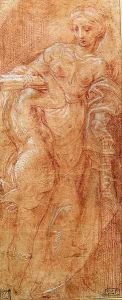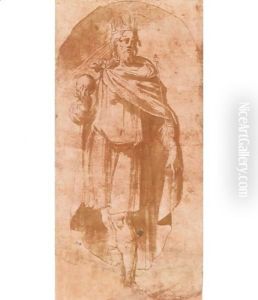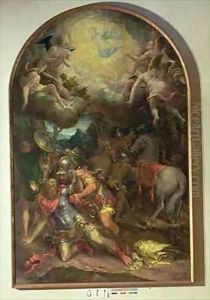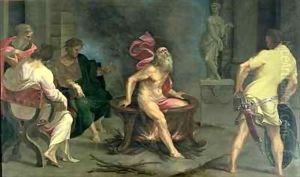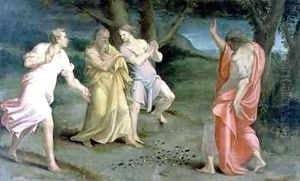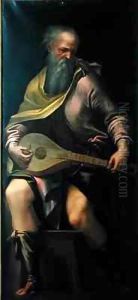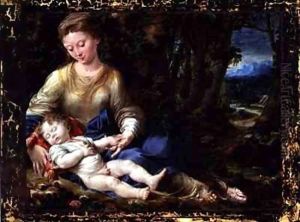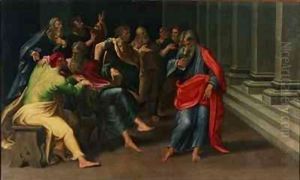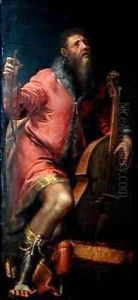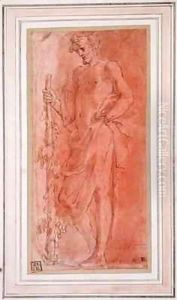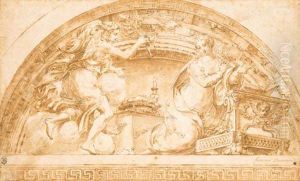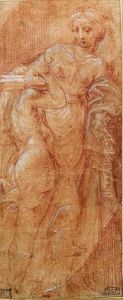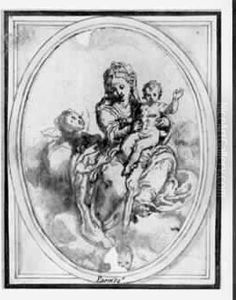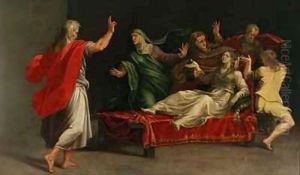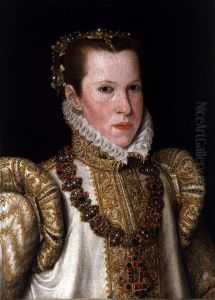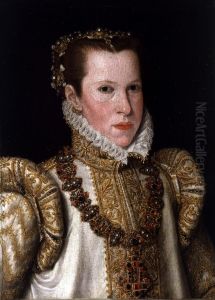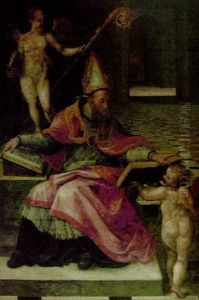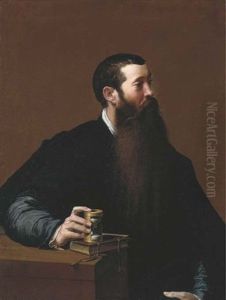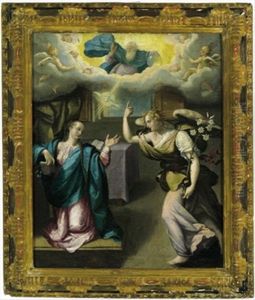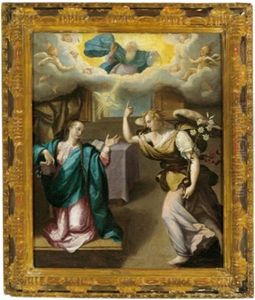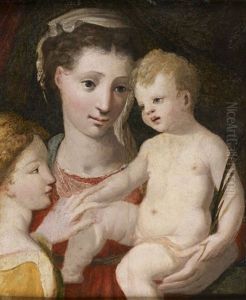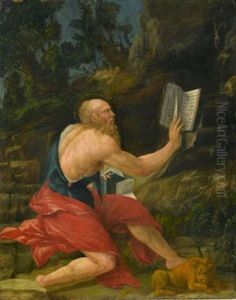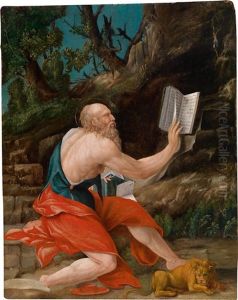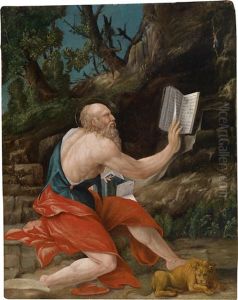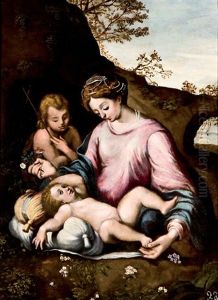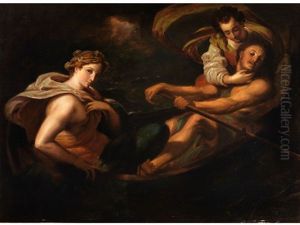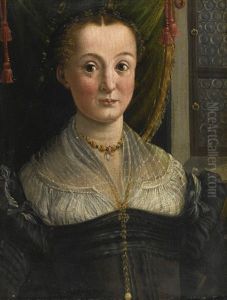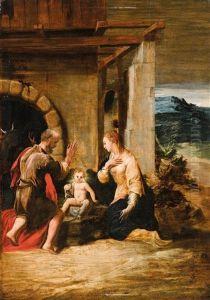Girolamo Mazzola Bedoli Paintings
Girolamo Mazzola Bedoli was an Italian painter active during the Renaissance period, particularly noted for his work in the Parma region. Born around 1500 in Viadana, a commune in the province of Mantua, Lombardy, Bedoli was a member of the Mazzola family, which included his more famous relative, Girolamo Francesco Maria Mazzola, better known as Parmigianino. Despite the overshadowing fame of Parmigianino, Bedoli developed his own distinctive style that contributed to the artistic developments of the time.
Bedoli’s early life and training are not well-documented, but it is believed that he was a pupil or follower of Parmigianino, whose elegant and mannerist style had a profound influence on him. After Parmigianino's death in 1540, Bedoli completed some of his cousin's unfinished works, which might have contributed to the blending of their styles in the eyes of contemporaries and later art historians.
Throughout his career, Bedoli worked on a variety of artistic projects, including altarpieces, frescoes, and portraits. He is especially recognized for his religious paintings, which often feature elongated figures and a subtle use of color that reflect the Mannerist aesthetic. His works are characterized by their refined grace and the delicate portrayal of figures, imbued with a sense of spirituality and inner life.
Bedoli took on important commissions in Parma, including work for the Church of San Giovanni Evangelista and the Parma Cathedral. His work was part of the artistic movement that was sweeping through Italy during the 16th century, which was marked by a departure from the High Renaissance's balance and harmony in favor of a more expressive and complex approach to composition and form.
Unfortunately, despite his talent, Bedoli did not achieve the same level of fame as some of his contemporaries, and his works are sometimes confused with those of other artists from the same period. However, his contribution to the Mannerist movement in Northern Italy remains significant, and his paintings can be found in various churches and collections, illustrating his skill and the unique place he occupies in the history of Italian art.
Girolamo Mazzola Bedoli passed away in 1569, leaving behind a body of work that continues to be appreciated for its elegance and artistry. His legacy is preserved through his paintings, which offer a glimpse into the rich cultural and artistic milieu of Renaissance Italy.
